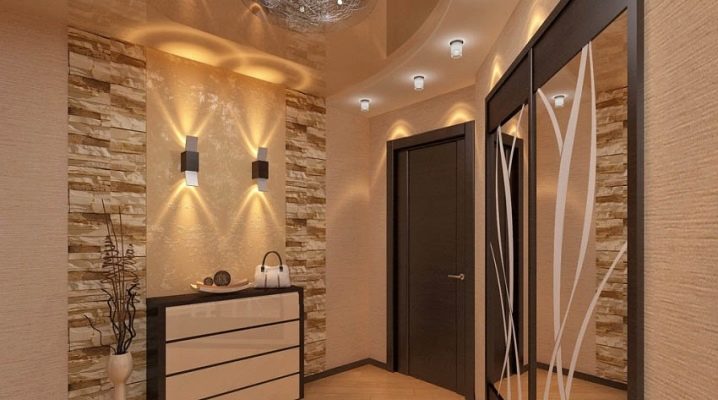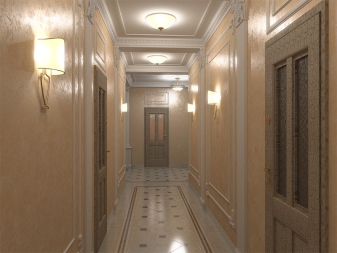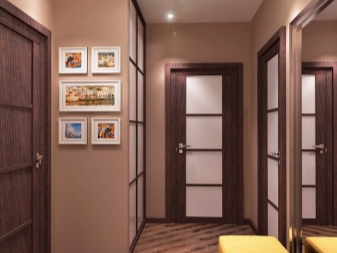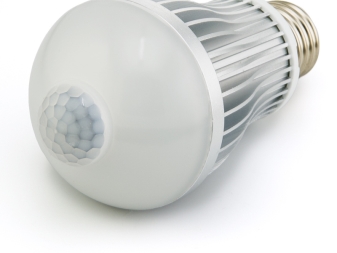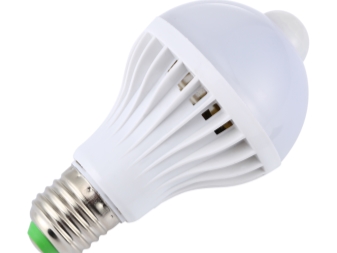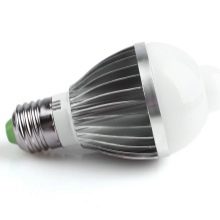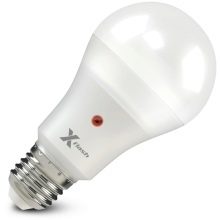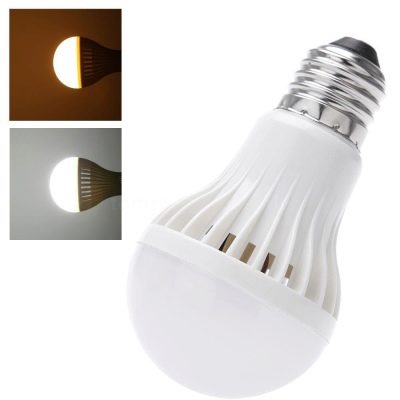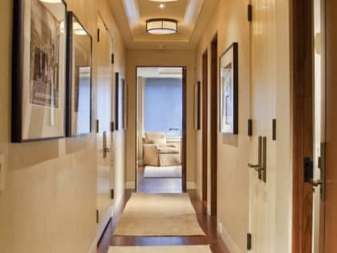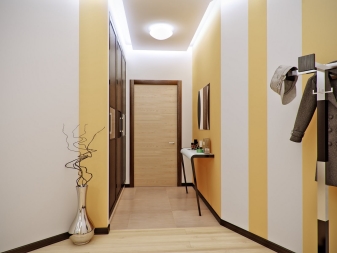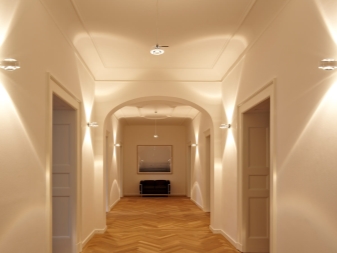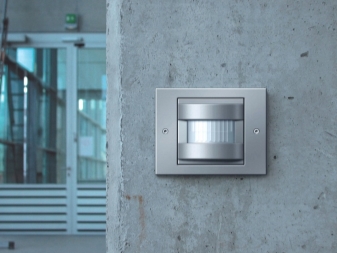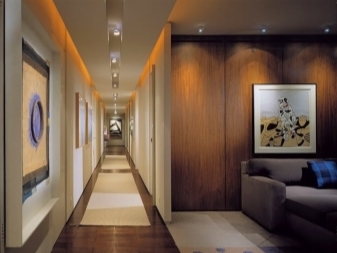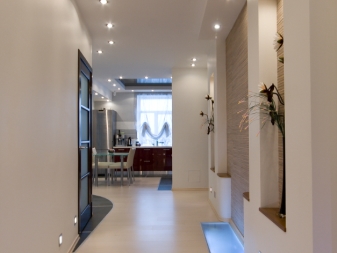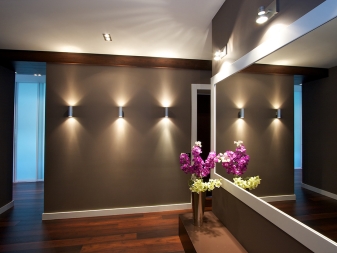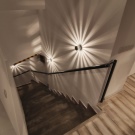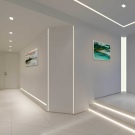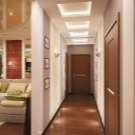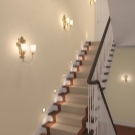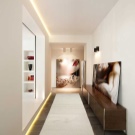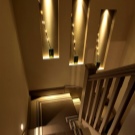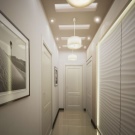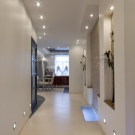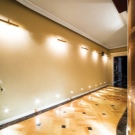LED bulbs with motion sensor
Savings and savings has become the main focus of modern reality. Lighting is no exception. For about two decades, lighting devices have become less and less demanding of energy, smaller and more powerful.
LED lamps have become the latest achievement of science and its culmination at the moment, then the development of lamps for lighting should take place with radically new technologies. At the moment, the achievement of scientific minds was the discovery of lighting items that react to movement or sound. About them will be our article.
What it is?
The fundamental part of this designer lighting fixture is a matrix that combines low voltage LEDs. The matrix is attached to the base, the radiator is added to remove excess heat and covered with a dense lid that serves as a diffuser. So far, everything is simple. Further, depending on the expected results are supported by the power supply,various sensors or a PWM generator (in fact, it is simple in design, but an important element responsible for changes in the frequency of the pulses).
You will learn more about the LED lights with a motion sensor in the following video.
Differences from the usual lighting
Why are these new light bulbs, when they are so expensive, and the old and proven ones, although they burn out quickly, are still five times cheaper. All this is true, but ordinary bulbs are burned precisely because a heating coil cannot transfer voltage drops. It is undesirable for a sharp on or off and voltage failures - all that is so characteristic of our country. But for diode lamps not. Automatic stabilization, abstracted heat, the ability to change the voltage, color and brightness of the lamp - an indisputable plus in the direction of new technologies. The high cost of such lamps pays off life, savings on electricity and brightness and quality of illumination.
Another advantage of LED lighting is the ability to connect multi-functional sensors.
Their various combinations allow you to change the intensity of lighting, dim it to the dimness, turn it on and off using a mobile phone, clap, voice, or just entering the room.Such lamps are convenient to use at home, on the street both for your porch, and for street lighting in the country, porch, garage, in general, everywhere where lighting is needed only periodically. This method helps to save not only on the electricity consumed, but also on the light bulb itself.
A constantly burning light bulb burns out faster. A periodically switched on lamp, and even with the function of protection against overheating and voltage drop, perfectly fulfills the task set for a sufficiently long period of time. Such a lamp does not even need a switch, because it not only turns on, but also turns off automatically.
Principle of operation
Now let's look at how this works. Not all LED bulbs are equipped with sensors. Rather, no LED lighting devices are equipped with sensors without your desire. That is, coming to the store, you buy a light bulb that performs the function of lighting. The principle of its operation is simple, familiar and clear - we attach the base and turn on the switch. A variety of sensors are connected by the manufacturer after the manufacture of the lamp itself.
Sensors can focus on movement, heat, sound, and even body mass falling into the area being captured. Controllers with sound sensors are tuned to a specific sound that is programmable when connected. It can be clapping with the palms in a certain way, a voice command, or a special and distinctive sound signal. The LED lamp with a motion sensor is most often used with infrared radiation. More expensive models respond to changing wavelengths that they emit independently. These are high-precision sensors with high recoil rates.
Cheaper versions only work on external heat.
The problem is that the heat source can be any living object or not. Live objects include cats and dogs, large birds, and a heater or simply a gust of warm wind can become an inanimate object. This serious omission is eliminated by a long adjustment of the sensitivity of the sensors, so that when buying such a model you need to be prepared for this.
Two-wire motion sensors eliminate such difficulties. Their response is clearer, easily programmed and regulated, even by the mass of the desired object. That is, if we set a mass limit, say 20 kg, then objects that fall within the coverage area and weighing less than 20 kg will not turn on the lamp for lighting. Very comfortably!
Management options
It all depends on the intended use. The control can be carried out using a remote control, a GSM module, many wireless lines, and direct connection to the motion sensor itself. In the latter case, if the sensor is not built-in, it runs on batteries, which means it does not require an additional power source. Some of the manufacturers of LED lamps for "smart homes" offer a sms software bundle to one or more trusted numbers. In such cases, the lamp also becomes a security alarm system that interferes with or warns of intrusion into the room.
Difficulty of choice
There is nothing complicated about it. Choose the level of brightness, the one that is comfortable for your eyes, and you can say, the most difficult choice you have already made. The remaining parameters are solved as needed:
-
budget,
-
appointment;
-
location;
-
power;
-
manufacturer,
-
quality certificate
-
availability of the warranty period;
-
type of base;
-
power consumption.
Color management
Incidentally, the color of the lamp is no less important. But the choice here is also simple and explainable.With street lighting put a lamp of cold light, or it is also called "white". Indoors, white light is also suitable, but bright enough, in contrast to the so-called "yellow". But the "yellow" light is softer for the perception of the human eye. It is often used for reading in night lamps, or for general lighting in bedrooms and living rooms. This is another advantage of LED lamps - you can choose the type of color of light.
That is, one llama, depending on the desire of the console holder, changes the color of the lighting from blue, blue, greenish to red, orange or even purple. Ideal for people who need a constant change of environment - just press a couple of buttons on the control panel, and the room turns into a completely unfamiliar space, simply changing the spectrum.
How to choose a location?
Lamps with motion sensors are not recommended to be installed in the corners. Closing the “viewing angle” of the sensor, you thereby deprive it of considerable authority. In addition, the installation of such devices near batteries, heat fans or air conditioners can also lead to failures and unnecessary sensor triggering.Swaying tree branches, home fan blades and even moving the car outside the window can trigger the system. If it is configured only to turn on the lights, the problem is not so big, but still annoying. But security systems that are not configured according to the instructions will raise the alarm due to the heat of the engine passing by the car.
In an enclosed space, such as rooms, the developers recommend hanging such sensors on the ceiling, and preferably in the middle. This solves the problem of capturing the desired object at the right distance at the right time.
Installation of motion sensors on the street provides such parameters as:
-
passability;
-
openness of the review;
-
activity detection angle;
-
load capacity;
-
distances to walls and fences.
In the case of low permeability of the site sensors will have to put a few.
It is obvious that LED lamps flooded the market not because of competent marketing, but because of practicality in operation, a variety of use cases, reliability and durability.
